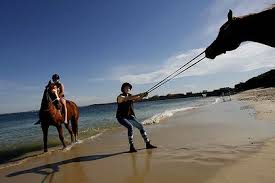 I believe it is a basic truism that you can’t make people do anything they don’t want to do. Every example I can think of ends up not working.
I believe it is a basic truism that you can’t make people do anything they don’t want to do. Every example I can think of ends up not working.
As a nation, we tried to force people to stop drinking (when they didn’t want to) by passing a constitutional amendment banning alcohol. The result? A black market and the rise of Al Capone.
Tell someone to stop smoking or lose weight (when they don’t want to) and it might result in short-term results, but the relapse rate in the long run is high.
While I’m sure there are exceptions to what I am calling a truism, I think I am more on the right track than the wrong track with this belief.
So, if you’re buying what I’m selling this morning, I have one simple question for you:
“Why do so many of us try to force non-profit board members to do fundraising when they tell us that they are strongly opposed to do it?”
I know, I know. We do it because many of our fundraising models need volunteers to be involved in order for it to work. Obviously, another basic truism in fundraising is that “people give to people.”
However, I still go back to where I started . . . forcing people to do what they don’t want to do is a recipe for failure.
So, what is the solution?
In my opinion, the answer can be found in the old Texas two-step:
- Stop recruiting people to do things they don’t want to do
- Start engaging people in honest discussions about what they do want to do
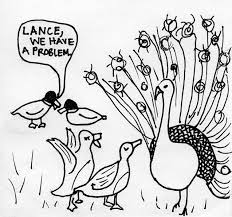 Board Development
Board Development
There have been many blog posts written on this subject, but it is time to stop agreeing with what is written and start putting those thoughts into action.
Your board development and recruitment process must include honesty, transparency and a number of tools that set expectations before a volunteer is asked to say “YES” to joining your board.
If someone wants to join your board but doesn’t have the stomach for fundraising, then you need to find another role for them in your organization (e.g. program volunteer, committee work, etc).
This type of strategic focus in recruiting like-minded people when it comes to fundraising will help solve your problem because you’ll no longer be forcing people to do what they don’t want to do.
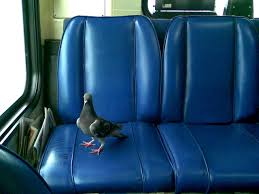 Resource Development Plan
Resource Development Plan
Unfortunately, this board development strategy won’t be enough to completely solve your problem.
Why?
Because not everyone around your boardroom table will be comfortable participating in every aspect of your fundraising program.
Some people are drawn to planning parties (e.g. special event fundraisers). Other people are attracted to your pledge drive and sitting down face-to-face with their friends to ask for money. There are also be a number of people who appear to disdain traditional fundraising activities, but who are open-minded to opening doors, going on donor solicitation visits (as long as you do the talking and asking), and various other stewardship activities.
The reality of the situation is that you need people to do all of these things in order for your fundraising program to be successful.
This is where involving everyone in writing your annual resource development plan comes into play.
Getting everyone involved in the planning process is akin to asking them to choose which seat on the bus they want to sit. In doing so, you avoid the pitfall of arm twisting and making people do what they don’t want to do (which never works and is where we started in the first paragraph of this blog post)
So, there you have it! Your agency’s fundraising problem is solved. 😉
Good luck rolling out this two-part strategy and please circle back to this space to let me know how it works out for you.
Here’s to your health!
Erik Anderson
Founder & President, The Healthy Non-Profit LLC
www.thehealthynonprofit.com
erik@thehealthynonprofit.com
http://twitter.com/#!/eanderson847
http://www.facebook.com/eanderson847
http://www.linkedin.com/in/erikanderson847

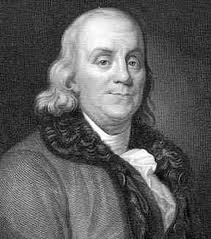 This entire week we’ve been looking back upon 2011 for major trends, and then looking forward to 2012 with an eye towards making a few predictions. Today’s post speaks to a fundraising prediction that has been true every year since the birth of our country more than 235 years ago:
This entire week we’ve been looking back upon 2011 for major trends, and then looking forward to 2012 with an eye towards making a few predictions. Today’s post speaks to a fundraising prediction that has been true every year since the birth of our country more than 235 years ago: There is also a great
There is also a great  Earlier this week, I found myself walking into a title company to interview a donor for a client. As I walked into the office building, I noticed the following things:
Earlier this week, I found myself walking into a title company to interview a donor for a client. As I walked into the office building, I noticed the following things: I walked away from the conversation thinking this was a unique, fun and quirky business practice. I also came to understand that this business practice was a genius idea on so many different levels:
I walked away from the conversation thinking this was a unique, fun and quirky business practice. I also came to understand that this business practice was a genius idea on so many different levels: As I walk down the driveway of an 80-something-year-old donor, he starts sharing a story with me about a skunk that appeared in his very nice and upscale neighborhood.
As I walk down the driveway of an 80-something-year-old donor, he starts sharing a story with me about a skunk that appeared in his very nice and upscale neighborhood. Happy Friday morning, DonorDreams blog readers! I owe you an apology because I missed my mark yesterday and didn’t publish a post. I had good intentions, but my day started fast and snowballed unexpectedly from that point onward. Needless to say, I didn’t even have time to reach into my bag of guest bloggers and share something from them with you. So, I’m going to rectify my Thursday mistake with a Friday morning bonus.
Happy Friday morning, DonorDreams blog readers! I owe you an apology because I missed my mark yesterday and didn’t publish a post. I had good intentions, but my day started fast and snowballed unexpectedly from that point onward. Needless to say, I didn’t even have time to reach into my bag of guest bloggers and share something from them with you. So, I’m going to rectify my Thursday mistake with a Friday morning bonus. I had an interesting chat today with a new client who told me their last grant writer didn’t have any luck using a costly search engine tool for finding new foundations. After a year, they ended the contract on the search engine and now he is no longer with the organization. The moral of this story? Tools don’t make the worker…the worker must really know how to get the most from their tools.
I had an interesting chat today with a new client who told me their last grant writer didn’t have any luck using a costly search engine tool for finding new foundations. After a year, they ended the contract on the search engine and now he is no longer with the organization. The moral of this story? Tools don’t make the worker…the worker must really know how to get the most from their tools.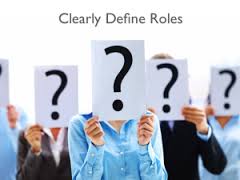 I’ve been doing a lot of “board roles and responsibilities” training sessions in the last year. The curriculum breaks out responsibilities into group obligations and individual duties; however, in both lists there is verbiage such as:
I’ve been doing a lot of “board roles and responsibilities” training sessions in the last year. The curriculum breaks out responsibilities into group obligations and individual duties; however, in both lists there is verbiage such as:
 Every time I hear a donor from a community’s “old guard” lament about no one taking their place and wishing organizations would start recruiting younger, up-and-coming professionals, I can’t help be smile. Why? Because in my experience, it is usually the same crowd who laments that a board of young professionals:
Every time I hear a donor from a community’s “old guard” lament about no one taking their place and wishing organizations would start recruiting younger, up-and-coming professionals, I can’t help be smile. Why? Because in my experience, it is usually the same crowd who laments that a board of young professionals: As many of you know, I am a big fan of
As many of you know, I am a big fan of  Those of you who regularly follow this blog know that every post in May 2014 was dedicated to the idea of how non-profit organizations build loyalty among various stakeholder groups (e.g. donors, board members, staff, volunteers, clients, etc). All of those posts culminated yesterday when DonorDreams blog hosted this month’s
Those of you who regularly follow this blog know that every post in May 2014 was dedicated to the idea of how non-profit organizations build loyalty among various stakeholder groups (e.g. donors, board members, staff, volunteers, clients, etc). All of those posts culminated yesterday when DonorDreams blog hosted this month’s  Enjoy the reading!
Enjoy the reading!